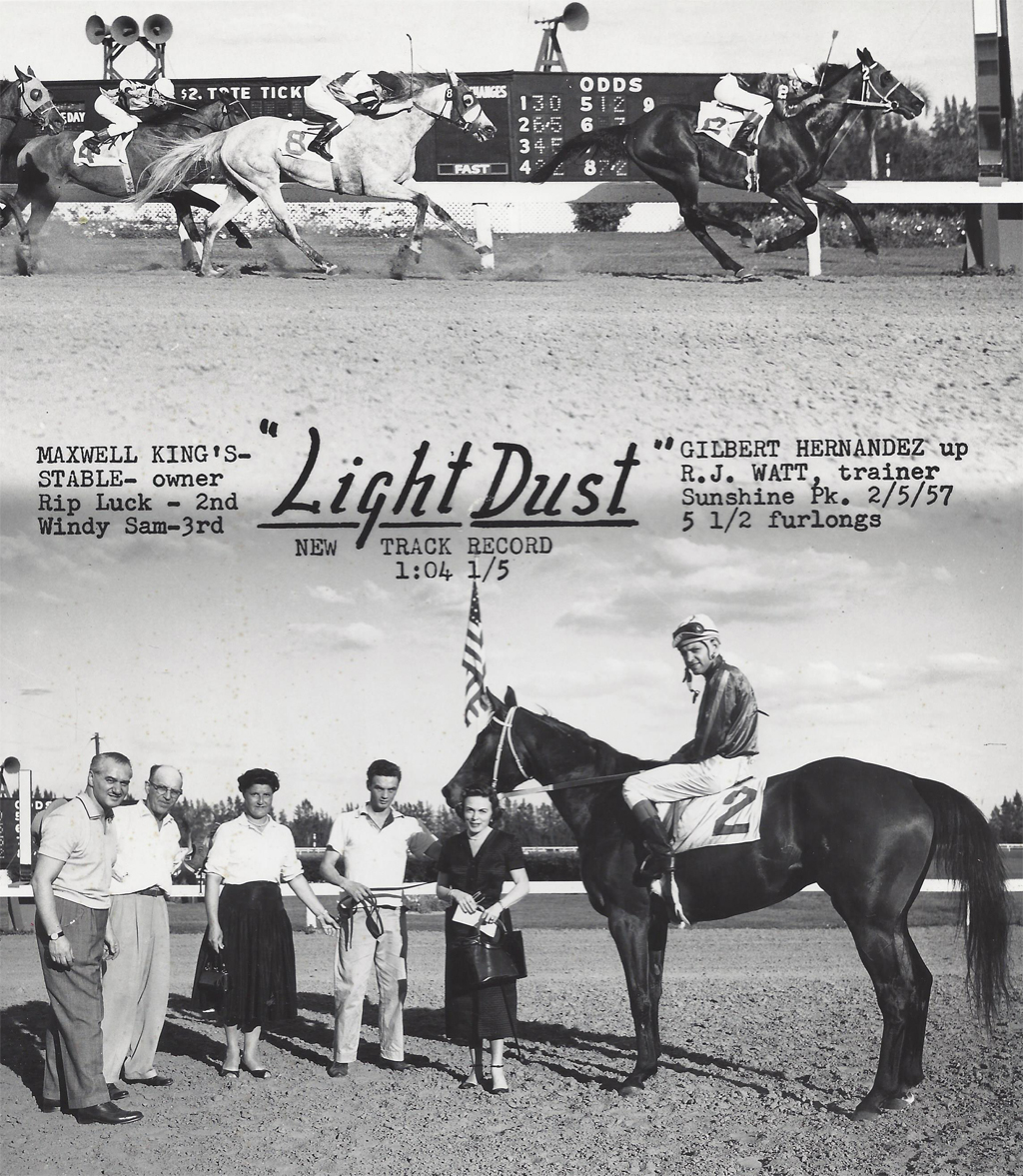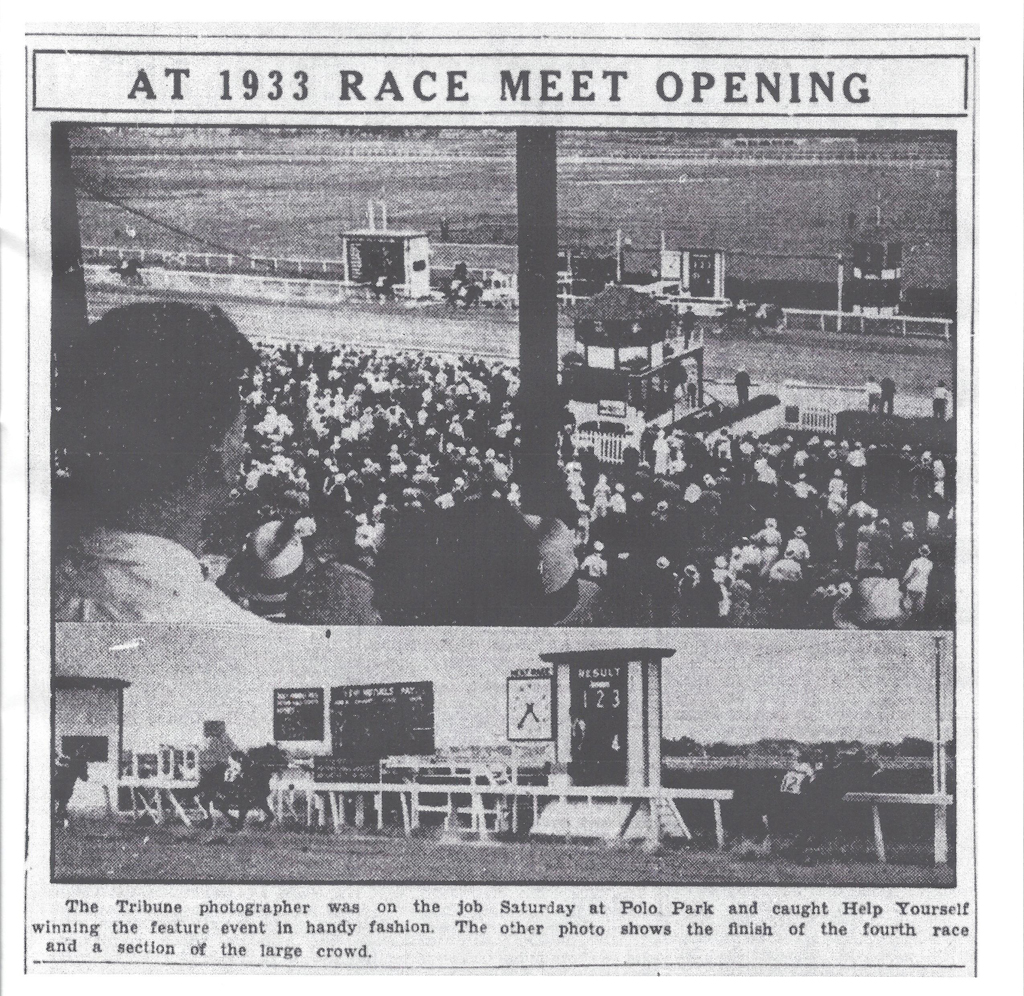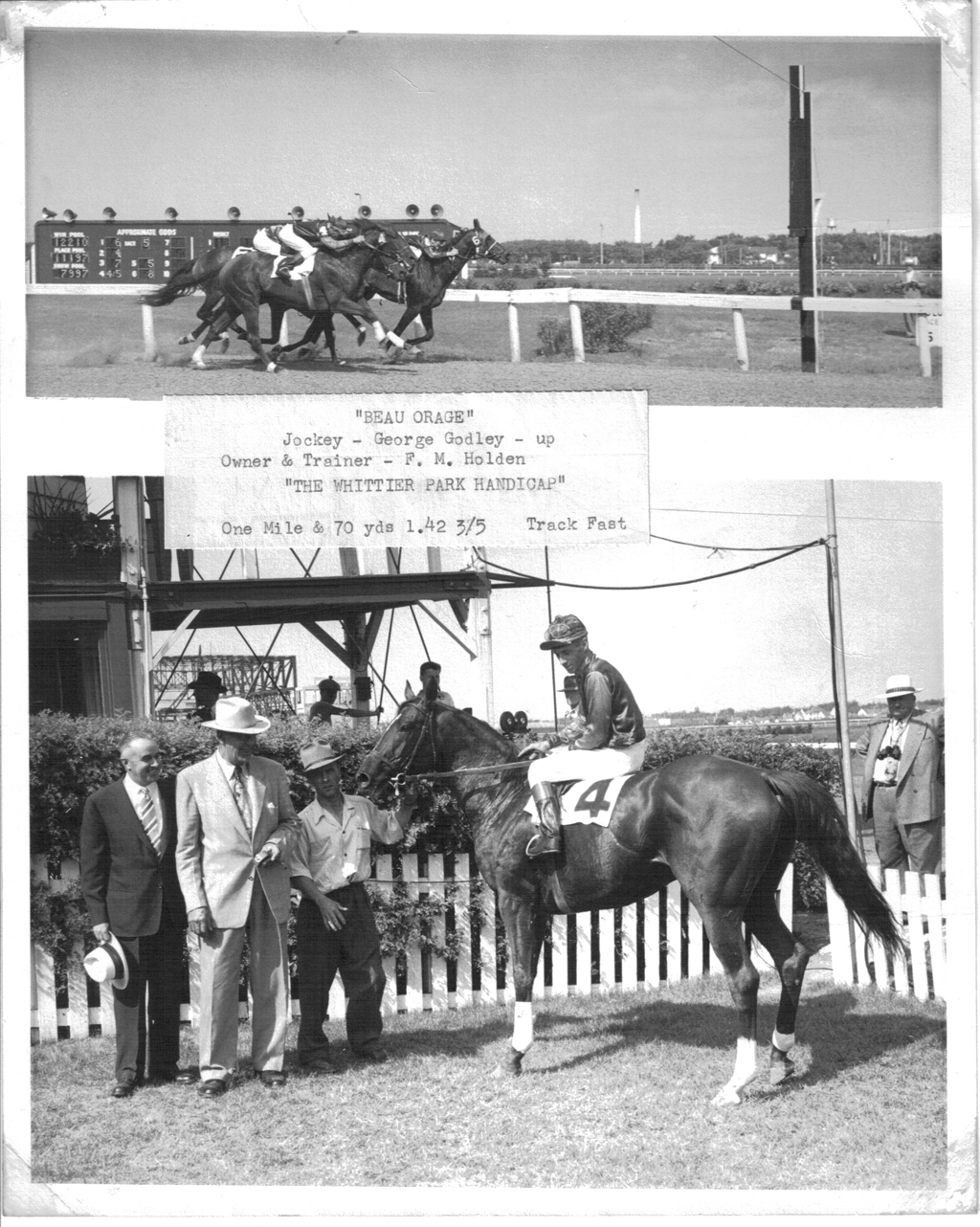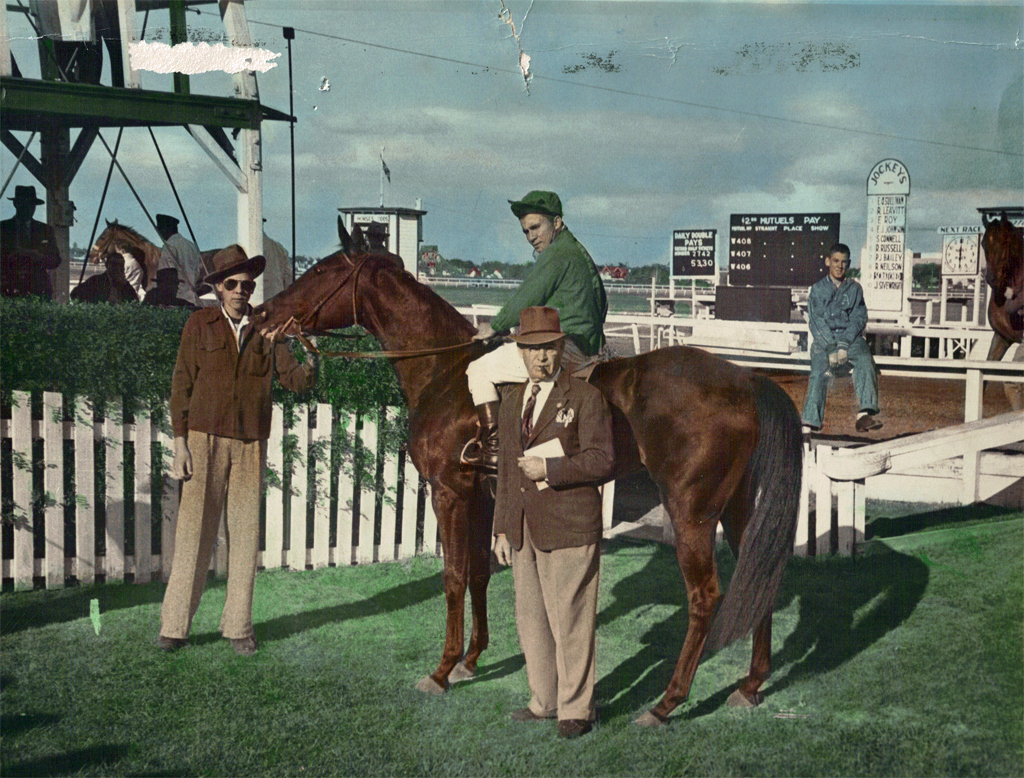
Possibly the best of the best, Light Dust won the Western Canada Handicap in 1954 and 1956. Shown here setting a new track record on February 5, 1957 at Sunshine Park.
by Bob Gates
Polo Park racetrack played host to some of the most historic races in Western Canada including the Manitoba Derby, Canadian Derby, Winnipeg Futurity and the Western Canada Handicap, the latter of which featured some of the greatest weight carriers in western Canadian racing history.
Polo Park’s 1926 race season featured the inaugural running of the Western Canada Handicap. It was the richest race ever run in Western Canada and was restricted to 3-year-olds and up that were bred in the west. The distance of the race varied, but it was always a mile or better. Eventually the breed restrictions would be eased, but early on the prairies held the monopoly on the race.
The Western was run at old Polo Park from 1926 until the track closed in 1956. Like the Canadian Derby, the race was adopted, some might say scooped, by Edmonton and never found its way back to Winnipeg.
The make up of the old Prairie Racing Circuit was such that the race meetings in the cities of the prairie provinces were coordinated so that they complemented each other. Classic prairie races like the Western Canada Handicap were assured that only the biggest and best aggregate of horses would compete for the rich purses. Racing fans from Calgary, Edmonton, Regina, Saskatoon and Winnipeg would see the cream of the crop.
Who were the stars of the Western? Some of the names have been featured in previous blog stories, while others get their first introduction in this post.
Today we will only concern ourselves with the Polo Park history of the Western. Following the closure of Polo Park however, the race went on for years in Alberta. The last I heard it was still on the stakes program out west.
In the 31-year Polo Park history of the race, five of the greatest western campaigners to ever grace the track won the event twice; Help Yourself (1933, 1934), Joey (1935, 1940), Fort Garry (1947, 1948), Beau Orage (1952, 1955) and Light Dust (1954, 1956). Now that's a list of some fine runners!
Help Yourself set the pace for our stars as the first repeat winner in back-to-back years (1933, 1934). In addition to his double win, Help Yourself also won the prestigious Speers Handicap in 1933 and 1934. His wins in the Western were historic, but to follow that up by winning the Speers in consecutive years was unimaginable. Help Yourself was a juggernaut in 1933 and 1934 and his record in these races has never been equaled.

Help Yourself winning the opening day feature at Polo Park in 1933.
Joey's career spanned 10 years and saw him appear in six Western Canada Handicaps. The little black gelding won the race twice (1935, 1940), placed third three times (1936, 1937, 1939) and had a fifth-place finish (1934).
A son of Dr. Joe out of the mare Aileen Hoey, Joey had his finest hour in the 1940 edition of the Western. The popular "Toytown Express" as he was known, liked to come from off the pace, and on this day Polo Park’s track was an awful shade of muddy. When Joey made his patented late charge his face was so caked with mud they were sure he was blind as a bat. His effort and supreme courage did not go unnoticed by R. J. Speers who said, " If Man O' War himself had raced here today, he would have received no greater acclaim."
Oh yeah, by the way, when Joey won the 1940 rendition of the race he was 10 years old. Nice job Joey!

Joey won the Western Canada Handicap in 1935 and 1940.
Fort Garry, Max Freed's veteran runner, raced for 11 years (1945-1955) and started in the Western in five consecutive years (1947-1951). He won the race in 1947 and 1948. In 1949 he was a victim of the weights, finishing second while spotting the winner 17 pounds! The chestnut gelding was always a tough foe and of our five double winners, he had the second highest career earnings at $50,052.
Tiny Holden's Beau Orage won the classic in 1952 and 1955. Who wouldn't be proud of a resume that included wins in the Winnipeg Futurity at two, Canadian and Alberta Derbys at three and the Whittier Park Handicap twice, as both a four and 5-year-old.

Beau Orage won the Western Canada Handicap in 1952 and 1955. Shown here winning the Whittier Park Handicap in 1955.
If you had to give the edge to one of these five bluebloods, it would probably go to the mighty Light Dust. The two-time winner was a tall strapping horse that measured over 17 hands. This star of Freed's Maxwell King Stable was the top money earner of our five stars with $61,261. After the race left Polo Park, Light Dust accomplished a feat never before realized. In 1957 he won his third Western Canada Handicap. To this day no other horse has matched this record.
Light Dust went on to compete at Assiniboia Downs until 1963 as a 13-year-old. Although he was winless in 1963, in 1962 he won two of his seven starts. Sadly, at that point he was running in lower level claiming races, but he still won at 12!
A special shout-out goes out to the late Max Freed, whose dedication to the sport is legendary. Both Fort Garry and Light Dust were from his Meadowbrook and later Maxwell King Stables. Quite a contribution to our racing history!
A handicap is defined as a race in which the racing secretary or track handicapper assigns weights designed to equal the winning chances of the entrants. The Downs hasn't run a handicap in years, but when they did the disputes between the trainers and the racing secretary were something else. The battle with the assignment of weights in the Western had its fair share of success stories.
In 1933 Help Yourself won the classic while carrying 126 pounds, spotting his competition any where from 16 to 28 pounds. In 1935 Joey and his 125 pounds won while giving his rivals a four to 24-pound advantage. Lastly, in 1948 Fort Garry finished first while carrying 128 pounds, giving 13 to 23 pounds to the rest of the field.

Tray to commemorate the 25th running of the Western Canada Handicap, won by R. J. Speers' Lord Fairmond.
They say that weight can stop a freight train and there was no better example of this than the 1928 contest. Favoured Yorkhome finished second under his 135 pounds, 14 more than the winner and a full 45 pounds heavier than the lightest entrant. In 1944 Teeworth was the overwhelming favourite, but his 131 pounds proved to be too much. He finished second, losing by a short nose to longshot Patage, who carried 15 pounds less. Honourable mention goes to Madgu Don, who carried 133 pounds to a fourth-place finish in 1929, 29 pounds more than the winner and 38 more than the light weight in the field.
In so many ways, it was the best of times. When I think of the memories of the Polo Park era and the old stars of the Winnipeg turf…
It makes my heart smile.

Fort Garry won the Western Canada Handicap in 1947 and 1948.


